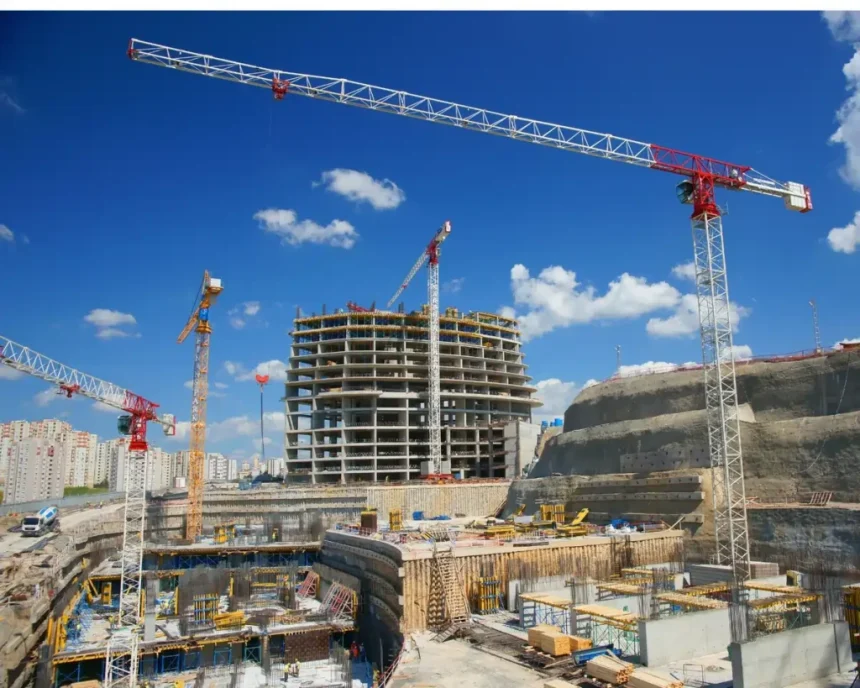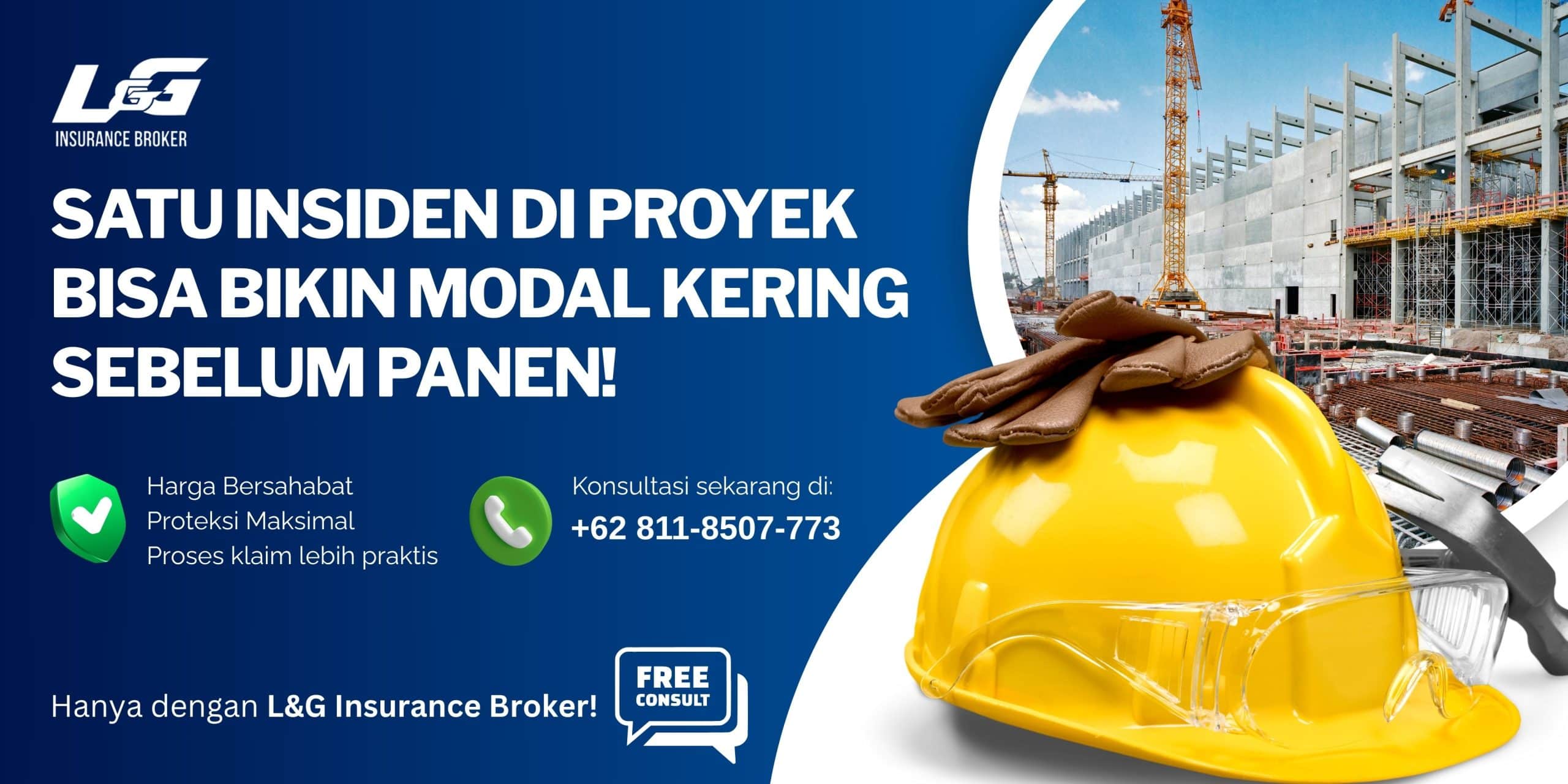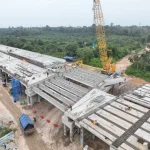In the construction industry, the risk of loss due to various factors, such as workplace accidents, natural disasters, and technical failures, is a major challenge that must be carefully anticipated. Construction insurance is an essential protection solution to ensure project continuity and minimize the financial impact of these risks. In Indonesia, along with the development of the construction sector and the increase in national infrastructure projects, the need for adequate construction insurance continues to grow.
However, amidst global market dynamics and current economic conditions, construction industry players face new challenges related to rising insurance premium costs. Rising material prices, exchange rate volatility, and new risks from climate change and the global pandemic have prompted insurance companies to adjust premium rates to balance risk and return. This makes achieving competitive construction insurance premium rates increasingly important and challenging.
This article aims to provide strategic guidance for contractors, developers, and project owners on how to obtain optimal construction insurance premium rates without sacrificing coverage. By understanding the factors that determine premiums and implementing several practical steps, it is hoped that you can more intelligently choose insurance that meets your project’s needs and is cost-effective.
For the right construction insurance solutions and professional support in getting competitive premium rates, please do not hesitate to contact us.L&G Insurance Broker—your trusted partner in construction risk protection. We’re ready to help you design an insurance policy tailored to your project needs at a competitive price.
Understanding Factors That Influence Construction Insurance Premium Rates
Before discussing strategies for obtaining competitive construction insurance premium rates, it’s important to first understand the key factors that influence premium rates. Understanding these factors can help you better manage risk and tailor your insurance needs to your budget.
- Project Risk
Each construction project carries a different level of risk, depending on location, type of construction, and duration of work. Projects in disaster-prone areas, such as those prone to flooding, earthquakes, or landslides, typically incur higher premiums. Similarly, projects involving complex construction techniques or using expensive, specialized materials increase the risk of damage and claim costs. - Insurance Value and Policy Coverage
The amount of coverage (sum insured) directly affects the premiums paid. Policies with broad coverage, such as all risks, generally have higher premiums than policies that only cover specific risks. Therefore, determining the appropriate coverage limit is crucial to avoid costly over-insurance. - Contractor Risk Profile and Previous Experience
Insurance companies also assess the contractor’s reputation and track record in handling previous projects. Contractors with a minimal claims history and good safety standards typically receive more competitive premiums. Conversely, high risk for new contractors or those with poor claims records can increase premium rates.
4.Occupational Safety Regulations and Standards
Compliance with government regulations and the implementation of Occupational Safety and Health (K3) standards are important indicators for underwriters. Projects that implement strict K3 procedures are generally considered lower risk, potentially leading to better premiums.
Strategy to Obtain Competitive Premium Rates
To address the challenge of rising construction insurance premiums, there are several strategic steps you can take to obtain more competitive premium rates without compromising the quality of your coverage. Here are some key strategies that have proven effective:
a. Preparation of Complete and Accurate Project Documents and Data
One of the keys to an insurance company’s ability to offer appropriate premiums is the availability of transparent and complete project data and documents. Documents such as work plans, construction schedules, technical descriptions, and risk mitigation measures must be prepared in detail. Complete data helps underwriters accurately assess risks, ensuring premiums are more aligned with the project’s risk profile.
Also, ensure a complete list of contractors and subcontractors, complete with their track records and relevant certifications, is included. Incomplete documentation often leads underwriters to charge higher premiums to account for unforeseen risks.
b. Improving Contractor Risk Profile
Insurance companies pay close attention to contractors’ track records and risk management practices. By conducting internal risk audits and strengthening occupational health and safety (OHS) management systems, risk profiles can be improved.
Having a recognized K3 certification and a proven track record of successful projects without major claims will increase underwriter confidence. Conversely, projects with a history of incidents or accidents will face higher premiums.
Implementation of regular safety training and use of modern equipment is also an added value.
c. Using the Services of a Professional Insurance Broker
Insurance brokers play a crucial role in helping project owners obtain competitive premiums. They have extensive networks with various insurance companies and are able to conduct market research to find the best deals.
Brokers also assist with premium negotiations and policy coverage adjustments to suit project needs without overpaying. With their expertise, brokers can more effectively bridge the communication gap between clients and underwriters.
d. Choose a policy with coverage that suits your needs.
Choosing the right policy is an art in itself. Avoid purchasing a policy with excessively high limits (over-insurance), as this will increase premiums without providing significant additional benefits.
Conversely, limits that are too low can leave the project under-protected. Choose a policy that offers risk coverage tailored to the project’s characteristics, such as an All Risks policy if the project is high-risk, or a limited policy if the risks are manageable.
Also negotiate policy clauses to avoid overlapping or irrelevant coverage, making premiums more efficient.
e. Develop a Proactive Risk Management Program
Insurance companies highly value projects with active and proactive risk management. By establishing a structured risk management program, from risk identification and mitigation to incident reporting, you can demonstrate a serious commitment to risk control.
A fast reporting system and effective corrective action will minimize the possibility of large claims and improve the reputation in the eyes of underwriters, so that premiums can be more competitive.
f. Policy Timing and Duration
The timing of policy purchase also affects premium prices. Generally, purchasing insurance early in a project, with a duration aligned with the construction timeline, facilitates risk assessment.
Choosing the right policy duration, for example not too long beyond the work period, can also avoid wasting premiums.
g. Negotiation and Good Relationship with Underwriter
Finally, establishing good and ongoing communication with the insurance company is crucial. Regularly providing project updates, informing about corrective actions, and discussing risks will help build trust.
A good long-term relationship is usually followed by more profitable premium flexibility and special offers.
Short Case Study
As a real example, a large contractor company in Jakarta succeeded in reducing construction insurance premiums by up to 20% on a 30-story building construction project by implementing several of the strategies already explained.
The company began by preparing comprehensive project documentation, including a detailed work schedule and risk analysis. They also conducted an internal audit of occupational safety management and obtained full OHS certification. With the assistance of a professional insurance broker, they conducted market research with various underwriters and selected an all-risks policy with appropriate limits without over-insurance.
Additionally, they maintain regular communication with the insurance company and regularly report on project progress. As a result, the insurance company offers more competitive and flexible premiums, positively impacting the project’s overall cost efficiency.
MObtaining competitive construction insurance premium rates is possible, even amidst the challenges of rising project costs and current market volatility. The key lies in a thorough understanding of risk factors, comprehensive project data preparation, and sound risk management implementation. Furthermore, utilizing the services of a professional insurance broker and building strong relationships with insurance companies can help negotiate premiums more efficiently and tailored to your needs.
By consistently implementing these strategies, you not only protect your project from the risk of loss but also optimize operational costs so you can compete better in the construction market.
To get the right construction insurance solution with competitive premium rates, as well as experienced professional support, don’t hesitate to contact us.L&G Insurance BrokerOur team is ready to help you design an insurance policy that meets your project needs and supports a smooth insurance procurement process.
—
DON’T WASTE YOUR TIME AND SECURE YOUR FINANCIAL AND BUSINESS WITH THE RIGHT INSURANCE.
HOTLINE L&G 24 JAM: 0811-8507-773(CALL – WHATSAPP – SMS)
Website: lngrisk.co.id
Email: halo@lngrisk.co.id
—







![[HADIRI WEBINAR GRATIS]
L&G Academy Online Webinar: Heavy Equipment, Heavy Risk! Wajibnya Perlindungan Asuransi Alat Berat bagi Kontraktor dan Pemilik Alat
Dalam proyek konstruksi dan pertambangan, alat berat adalah aset bernilai tinggi yang menjadi tulang punggung operasional. Namun, kerusakan, kecelakaan, atau kehilangan alat di lapangan bisa menimbulkan kerugian besar dan menghentikan pekerjaan di tengah jalan.
Banyak kontraktor dan pemilik alat baru sadar pentingnya asuransi setelah kerugian terjadi. Padahal, perlindungan yang tepat bisa menjadi penyelamat bisnis.
🎙️ Narasumber:
Mhd. Taufik Arifin
CEO & Founder L&G Insurance Brokers
Lebih dari 40 tahun pengalaman menangani asuransi alat berat, marine, dan proyek besar di Indonesia
📅 Rabu, 12 November 2025
🕙 10.00 WIB – selesai
📍 Live via Zoom
💰 GRATIS! Kuota terbatas
🔗 Registrasi di: bit.ly/3JuYYfh
📲 Daftar sekarang sebelum Anda menyesal jadi salah satu yang “baru sadar setelah rugi besar.”
📞 0811-8507-773
#webinargratis #webinaralatberat #onlinewebinar #kelaswebinargratis #mining #miningequipment #heavyequipment #alatberat #heavyequipmentinsurance #CPM](https://scontent-yyz1-1.cdninstagram.com/v/t51.82787-15/572482319_18404442202184229_2761295381299065355_n.jpg?stp=dst-jpg_e35_tt6&_nc_cat=110&ccb=1-7&_nc_sid=18de74&efg=eyJlZmdfdGFnIjoiRkVFRC5iZXN0X2ltYWdlX3VybGdlbi5DMyJ9&_nc_ohc=hUGdS-mlozUQ7kNvwHGGHmQ&_nc_oc=Adn373X_1hCGrl_x6VMZ4fLWfpqhSVy8Mm4EbM0PVeFRWDcG238n-yi5Y0V1ogLHWONyTqLW6p0rastYTzpPn_NY&_nc_zt=23&_nc_ht=scontent-yyz1-1.cdninstagram.com&edm=ANo9K5cEAAAA&_nc_gid=plsO2jnVBhZv2jvCys8lSQ&oh=00_Afiej66HGEjXISVgh9p5Imo9j7lKyZPIlYRokRi16Ryhmg&oe=69113B7F)

![[RECAP WEBINAR: Strategi Asuransi yang Tepat untuk Melindungi Risiko Proyek PLTS]
Proyek PLTS, baik Rooftop maupun Floating Solar Farm, menyimpan risiko unik mulai dari gangguan instalasi, cuaca ekstrem, hingga keterlambatan operasional yang bisa menimbulkan kerugian besar.
Webinar kami membahas strategi asuransi yang tepat untuk melindungi proyek Anda dari risiko-risiko ini, termasuk:
✅ Jenis risiko yang harus diperhatikan
✅ Pilihan proteksi dari tahap konstruksi hingga operasional
✅ Peran broker asuransi untuk memastikan polis sesuai karakteristik proyek
Dengan proteksi yang tepat, proyek PLTS dapat berjalan lancar, aman, dan memberikan hasil optimal tanpa khawatir risiko tak terduga.
📣 Jangan lewatkan webinar kami berikutnya dengan topik yang lebih menarik dan penuh insight praktis!
Follow akun kami dan aktifkan notifikasi agar selalu update.
#PLTS #RenewableEnergy #AsuransiProyek #BrokerAsuransi #FloatingSolar #SolarEnergy #RiskManagement #AmanBersamaLnG #GreenEnergy](https://scontent-yyz1-1.cdninstagram.com/v/t51.82787-15/565040657_18401624725184229_5747722940848587674_n.jpg?stp=dst-jpg_e35_tt6&_nc_cat=106&ccb=1-7&_nc_sid=18de74&efg=eyJlZmdfdGFnIjoiQ0FST1VTRUxfSVRFTS5iZXN0X2ltYWdlX3VybGdlbi5DMyJ9&_nc_ohc=MYHHIvgjjtYQ7kNvwGn7rtP&_nc_oc=AdlxnPvW0Evj2HRUrbs-o950eNvlXgfN_39YX6OoVLOGsCdJtTS55bOjdJNCSk39Tnj4BRpNEJoTXYcBh8Wv7trd&_nc_zt=23&_nc_ht=scontent-yyz1-1.cdninstagram.com&edm=ANo9K5cEAAAA&_nc_gid=plsO2jnVBhZv2jvCys8lSQ&oh=00_Afg2MWmY7C1oXhXWQCjWIbe5zmIQFsl6n0HP58mcieSkRQ&oe=691132C1)









